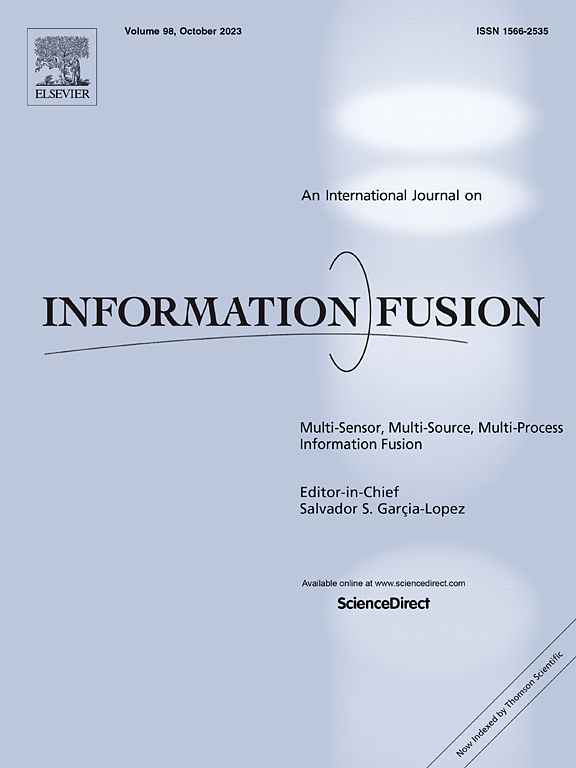Multi-section myocardial status evaluation algorithm based on electrocardiogram and ultrasound image fusion
IF 14.7
1区 计算机科学
Q1 COMPUTER SCIENCE, ARTIFICIAL INTELLIGENCE
引用次数: 0
Abstract
The heart is a vital organ in the human body, with the myocardium being an essential component. The microcirculatory state of the myocardium is directly correlated with heart function, making its study of significant importance. Currently, myocardial analysis predominantly relies on subjective assessments by physicians, lacking quantitative indicators and effective imaging techniques. To facilitate real-time observation of cardiac conditions, we propose a multi-section myocardial status evaluation algorithm based on electrocardiogram and ultrasound image fusion. 1) Aligning multi-section ultrasound images in the temporal perspective using electrocardiograms as a foundation for subsequent analyses. 2) Introducing a myocardial segmentation model that incorporates both deep and shallow features, utilizing multi-scale to obtain more information and achieve myocardial precise extraction. 3) Constructing a bullseye plot based on medical diagnostic standards, and introducing quantitative indicators for assessment, intuitively displayed the results through color mapping. We compile an imaging dataset from 411 clinical groups. Two professional radiologists mark the myocardial regions using a blinded method, with their qualitative assessments of cardiac conduction status serving as the gold standard. Experiments show that: 1) The algorithm effectively segments the myocardium, achieving an Area Overlap Measure (AOM) of 94 %, which is a 13 % improvement over the EUnet model. 2) The myocardial status assessment algorithm yields acceptable results, assisting directly in the diagnosis in 84 % of cases, thereby enhancing the accuracy of physicians’ detections.
基于心电图与超声图像融合的多段心肌状态评估算法
心脏是人体的重要器官,心肌是必不可少的组成部分。心肌微循环状态与心功能直接相关,对其进行研究具有重要意义。目前,心肌分析主要依靠医生的主观评估,缺乏定量指标和有效的成像技术。为了便于实时观察心脏状况,我们提出了一种基于心电图和超声图像融合的多段心肌状态评估算法。1)利用心电图在时间透视下对齐多段超声图像,作为后续分析的基础。2)引入深层和浅层特征相结合的心肌分割模型,利用多尺度获取更多信息,实现心肌的精确提取。3)根据医学诊断标准构建靶心图,引入定量指标进行评估,通过彩色映射直观显示结果。我们编译了来自411个临床组的影像数据集。两名专业放射科医生用盲法标记心肌区域,他们对心脏传导状态的定性评估作为金标准。实验表明:1)该算法有效地分割了心肌,面积重叠度量(Area Overlap Measure, AOM)达到94%,比EUnet模型提高了13%。2)心肌状态评估算法的结果可以接受,84%的病例直接辅助诊断,从而提高了医生检测的准确性。
本文章由计算机程序翻译,如有差异,请以英文原文为准。
求助全文
约1分钟内获得全文
求助全文
来源期刊

Information Fusion
工程技术-计算机:理论方法
CiteScore
33.20
自引率
4.30%
发文量
161
审稿时长
7.9 months
期刊介绍:
Information Fusion serves as a central platform for showcasing advancements in multi-sensor, multi-source, multi-process information fusion, fostering collaboration among diverse disciplines driving its progress. It is the leading outlet for sharing research and development in this field, focusing on architectures, algorithms, and applications. Papers dealing with fundamental theoretical analyses as well as those demonstrating their application to real-world problems will be welcome.
 求助内容:
求助内容: 应助结果提醒方式:
应助结果提醒方式:


